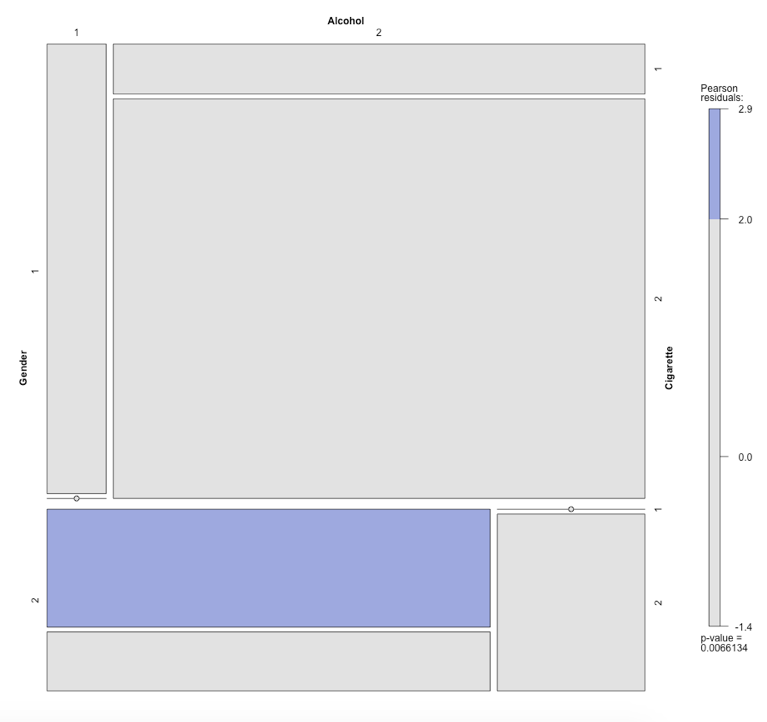I'm using the mosaic and assoc functions in the library vcd. My mosaic plot is as follows:

Here, Gender 1 = female, 2 = male; Alcohol 1 = yes, 2 = no; Cigarette 1 = yes, 2 = no. I understand that the size of the boxes correspond to how many observations fall into that category. So the biggest rectangle in my plot represents that there are more people who are female, non-alcoholic, non-smoker than any other category.
I'm a little confused by the shading of the boxes. I read from http://cran.r-project.org/web/packages/vcd/vignettes/residual-shadings.pdf that the shading represents the outcome of an independence test. I am assuming that the purple box in my plot is the only category that is statistically significant with a Pearson residual between 2.0 and 2.9. Pearson's chi-squared test (χ2) is a statistical test applied to sets of categorical data to evaluate how likely it is that any observed difference between the sets arose by chance (Wiki).
So given this, how would you interpret the purple block in my plot? I kind of have a vague idea of it, but I'm not sure how to put it into words: having a purple block basically means that the fact that there's a group of alcoholic, smoker males in the sample is statistically significant?

I also plotted an association plot of the same data, but I am not quite sure as to how to interpret it
